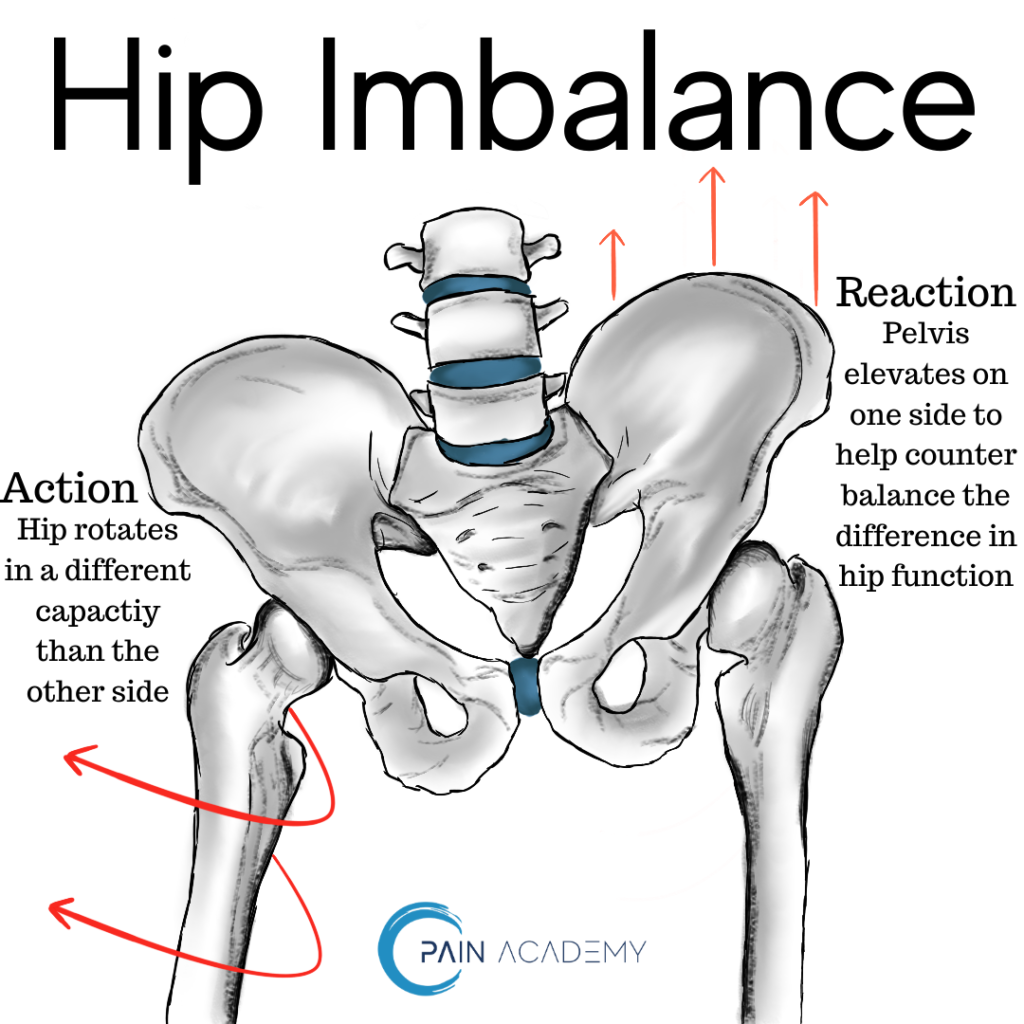
This problem goes by many names.
Hip disparity, hip hike, or leg length discrepancy to name a few..
Take away any names for a moment, what we are really talking about here is imbalance.
Your pelvis sits on top of two highly mobile ball and socket joints, your hips.
When there’s a difference in how each hip works, the pelvis resting atop this difference starts to torque, twist, rotate, elevate, tilt forward, or tilt backward — basically whatever it can do to help offset the imbalance to still give you reasonable leverage to produce movement and force.
If you can view the pelvic position as a reaction to the lack of function in the hips, or shoulders (that’s a different conversation) the problem tends to be a lot simpler to solve.
Let’s zoom out further though.
I’ve never worked with a hip imbalance where the ankles, knees, and shoulders, are perfectly good to go.
It’s always, always, always, an entire body issue.
To resolve a hip imbalance, we have to look past the glutes or hip flexors.
We have to look beyond all 58+ muscles that connect the hips, to the pelvis and the spine.
We have to look towards the entire body wrapped around this problem that either created this in the first place, or has been drastically compensating to help you move for years with this problem.
If you’re already a member in our Online Movement Therapy Program looking to fix this problem, keep working on your full body Rebalancing Movement Sequences and scout how your ankles, knees, hips, and shoulders are all contributing to this problem. It’s no coincidence that one shoulder is tighter, one ankle is more stiff than the other… the answer is always getting the entire body to rebalance simultaneously.
If you’re not a member, I just uploaded a simple sequence on my YouTube channel for you to start working on — run through the sequence the next few days to take the first step in this rebalancing process, then enroll to dive deeper! For your convenience I’ve provided the link to that sequence below!